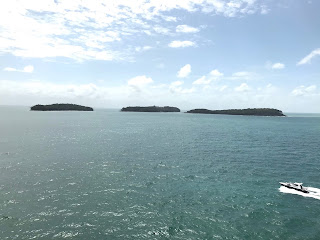St John’s, Antigua

The island of Antigua, formed by lava being emitted from submarine volcanoes, is known to have been inhabited since 2400 BC. It is claimed that there are 365 beaches on the island of Antigua, one for every day of the year, and there is a perfect climate to help enjoy those beaches. North east trade winds prevail and help in keeping the air comfortable, with low humidity, and in tempering the mid 20s C temperatures. Antigua became an independent nation in 1981 but the love of cricket has remained. Cricket is played here on any day, at any time, and has produced a number of world level cricketers. Richie Richardson, Viv Richards, Curtly Ambrose and Andy Roberts, to name a few. Christopher Columbus is considered to be the first European to show interest in this island and named it after the church of Santa Maria de la Antigua, in Seville, Spain. In 1632, the British colonized the island and the arrival of Sir Christopher Codrington in 1684, triggered development of large scale...


